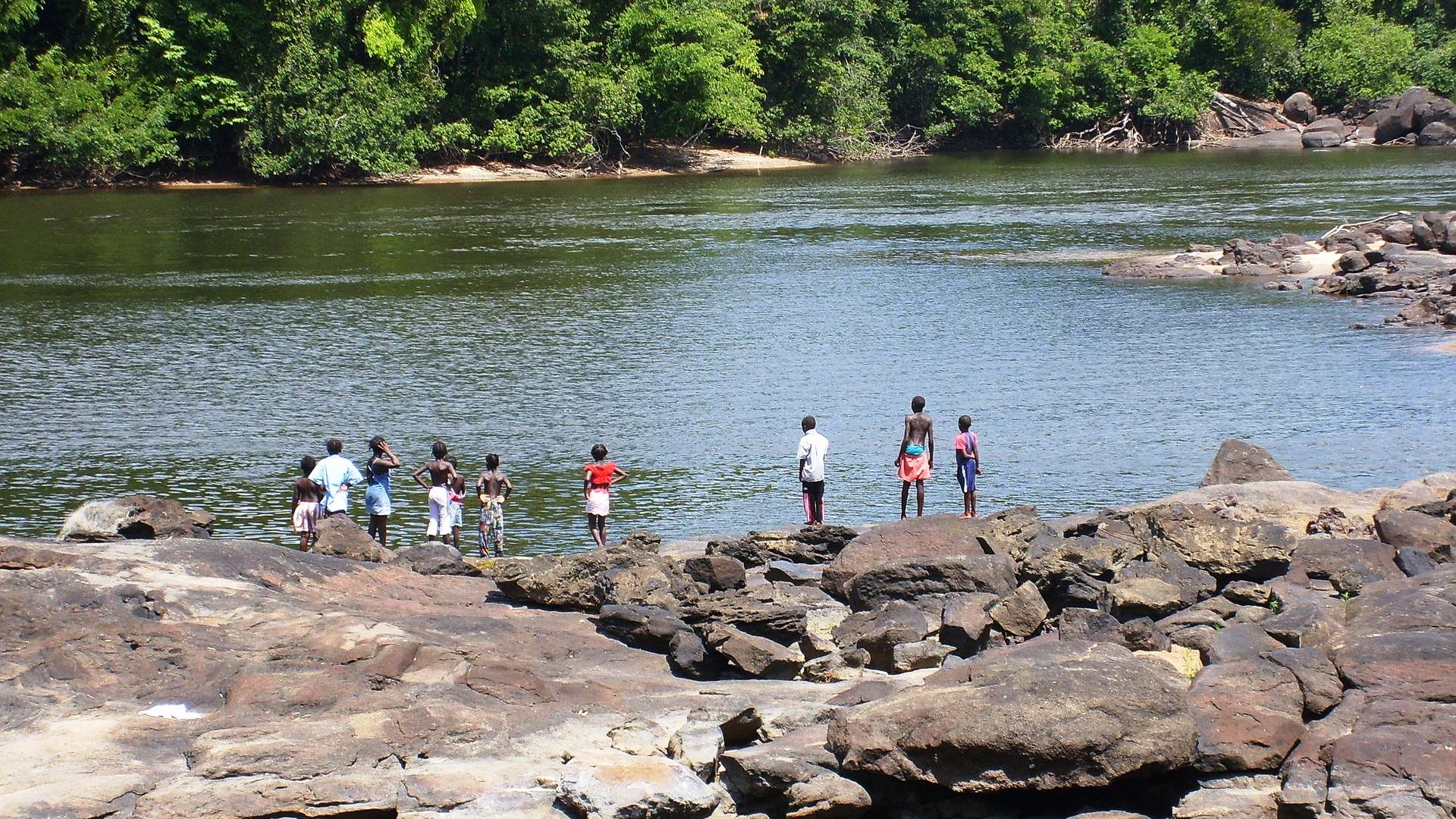Have you ever wondered about the diverse landscapes and natural beauty of Suriname? From pristine rainforests to stunning coastal areas, this country has it all. In this article, we will explore the ecological wonders of Suriname and how its unique landscape contributes to its rich biodiversity. Get ready to embark on a virtual journey through the stunning landscapes of Suriname and learn more about its fascinating wildlife and natural resources.
Suriname is often referred to as the “greenest” country in the world, and for good reason. With over 80% of its land covered in dense rainforests, it is home to an incredible array of plant and animal species. The Amazon rainforest, which spans across several countries including Suriname, is teeming with life and provides a vital ecosystem for countless organisms. In Suriname, you can find a wide variety of tree species, including towering giants like the bulletwood and kapok trees. Not only do these forests provide a habitat for countless species, but they also play a crucial role in regulating the global climate. In our upcoming article, we will delve deeper into the rainforests of Suriname and uncover the secrets they hold. So, stay tuned to learn more about the fascinating landscape of Suriname and the incredible biodiversity it sustains.
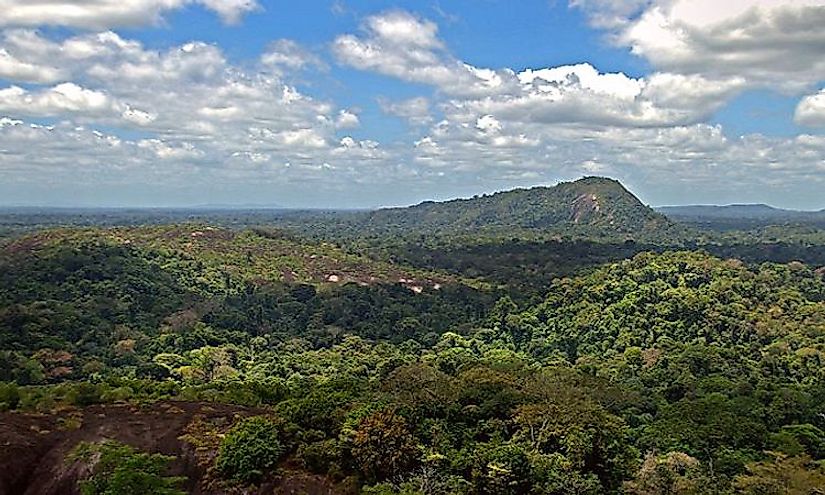
Overview of Suriname
Suriname, located on the northeast coast of South America, is a small country with a rich and diverse landscape. Surrounded by Guyana to the west, Brazil to the south, and French Guiana to the east, it is often referred to as the “greenest country on Earth.” With its lush rainforests, pristine wetlands, expansive mountains, and beautiful coastal areas, Suriname is a paradise for nature lovers and eco-tourists.
Location and geography
Covering an area of approximately 163,820 square kilometers, Suriname is the smallest country in South America. It is nestled between the Atlantic Ocean to the north and the Guyana Shield to the south. The country’s topography is characterized by low-lying coastal plains, vast swamps, and verdant rainforests.
Climate and weather
Suriname enjoys a tropical climate with high temperatures and humidity year-round. The average temperature hovers around 27-29 degrees Celsius (80-85 degrees Fahrenheit). The country experiences two distinct seasons: a wet season from April to August and a dry season from September to March. During the wet season, Suriname receives heavy rainfall, which contributes to its vibrant ecosystems.
Biodiversity
Suriname is known for its incredible biodiversity, boasting an abundance of plant and animal species. It is home to countless unique and endemic species, many of which have yet to be discovered and documented by scientists. The country’s diverse ecosystems provide habitats for jaguars, giant anteaters, sloths, caimans, river dolphins, and an astounding array of bird species.
Importance of Suriname’s Landscape
Suriname’s landscape holds immense ecological significance and plays a vital role in sustaining the planet’s biodiversity. Its pristine ecosystems support a wide range of plant and animal species, many of which are endangered or at risk of extinction. Protecting and conserving Suriname’s landscape is therefore crucial to preserving these precious natural resources for future generations.
Ecological significance
Suriname’s rainforests, wetlands, mountains, and coastal areas are all interconnected and contribute to a delicate and intricate web of life. Each ecosystem has its own unique characteristics and provides vital ecosystem services such as carbon sequestration, water filtration, and climate regulation. The health and well-being of these ecosystems are essential for maintaining the balance of nature.
Conservation efforts
Recognizing the importance of its natural heritage, Suriname has made significant efforts to preserve and protect its landscapes. The country has established numerous protected areas, including nature reserves and national parks, to safeguard its biodiversity hotspots. Additionally, international conservation organizations, such as Conservation International and WWF, work alongside local communities and the Surinamese government to implement sustainable conservation practices.
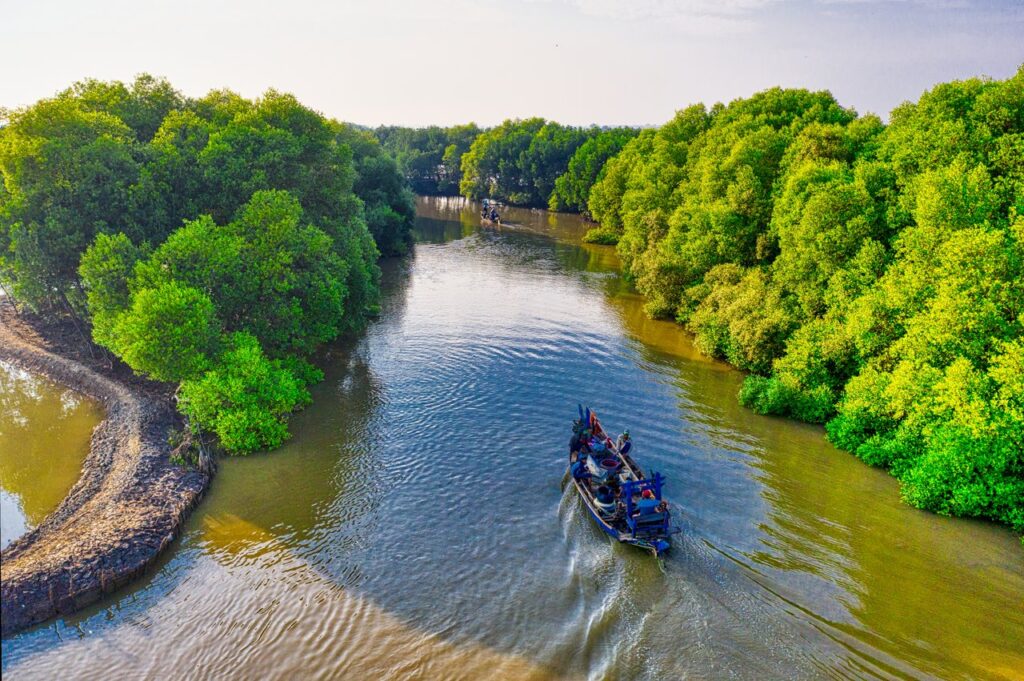
Suriname’s Main Ecosystems
Suriname’s diverse landscape can be divided into four main ecosystems: rainforests, wetlands, mountains, and coastal areas. Each ecosystem is unique in its own way, offering distinct habitats and supporting a wide range of plant and animal species.
Rainforests
Suriname’s rainforests are among the most pristine and biodiverse in the world. These lush, tropical forests are characterized by towering trees, dense vegetation, and a symphony of animal sounds. The Central Suriname Nature Reserve, a UNESCO World Heritage Site, is a prime example of the country’s untouched rainforests and is home to several endangered species, including the jaguar and giant river otter.
Wetlands
Suriname’s wetlands encompass a variety of habitats, including mangroves, swamps, and marshes. These waterlogged areas are teeming with life, providing a haven for numerous bird species, amphibians, reptiles, and aquatic plants. The Ramsar-listed Coppename and Suriname River Wetlands are of particular importance for their role in supporting migratory bird populations.
Mountains
Suriname’s mountainous regions are dominated by the Tumuc-Humac mountain range and the isolated peaks known as “tepuis.” The tepuis are ancient tabletop mountains characterized by their sheer cliffs and flat summits. These unique landscapes provide habitat for endemic plant species and serve as refuge for rare and endangered animals, such as the Guiana dolphin and the cock-of-the-rock bird.
Coastal areas
Suriname’s coastline is fringed by stunning beaches, towering sand dunes, and vibrant coral reefs. The coastal areas serve as nesting grounds for marine turtles, feeding grounds for migratory birds, and habitats for a diverse array of marine life. The Galibi Nature Reserve, located on the northeastern coast, is renowned for its nesting population of endangered leatherback turtles.
Rainforests in Suriname
Tropical rainforests
Suriname’s rainforests are a sight to behold, with their dense foliage, towering trees, and vibrant colors. These tropical rainforests are characterized by their high levels of rainfall and year-round warmth. They support a wide variety of plant species, including towering hardwood trees, orchids, bromeliads, and countless medicinal plants.
Flora and fauna
Suriname’s rainforests are a treasure trove of biodiversity, with an estimated 25,000 plant species and over 700 bird species. The forests are home to iconic animals such as the jaguar, giant anteater, capybara, and the colorful Guianan cock-of-the-rock bird. Rare and endangered species, such as the black caiman and the giant river otter, also find sanctuary within the rainforest’s vast and untouched wilderness.
Threats to rainforests
Despite their ecological importance, Suriname’s rainforests face numerous threats. Illegal logging, encroachment by agriculture, and unsustainable mining practices pose significant risks to these fragile ecosystems. Additionally, climate change and its associated impacts, such as increased droughts and forest fires, further exacerbate the challenges faced by Suriname’s rainforests.
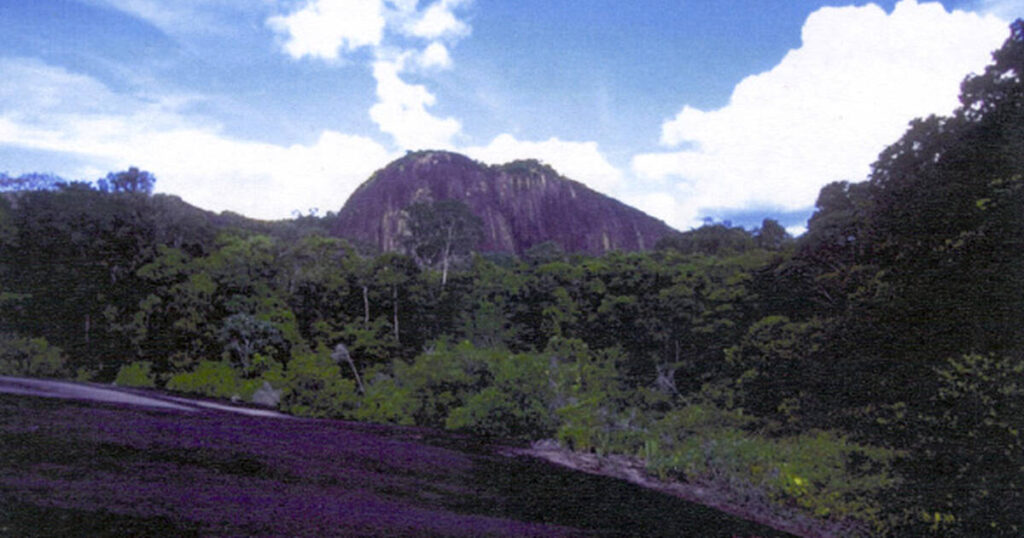
Wetlands in Suriname
Mangroves
Suriname’s mangroves are vital coastal ecosystems that provide crucial services to both terrestrial and marine life. These salt-tolerant trees act as a buffer against coastal erosion, provide nursery habitats for numerous fish species, and support a myriad of bird and invertebrate populations. The Bigi Pan, a Ramsar-listed wetland reserve, is a prime example of Suriname’s extensive mangrove forests.
Swamps and marshes
The swamps and marshes of Suriname are home to a diverse range of plant and animal species. These waterlogged areas provide critical habitats for amphibians, reptiles, and wading birds. The swampy savannahs of Suriname’s interior are particularly important for their role in maintaining water quality and regulating water flow within the ecosystem.
Importance for migratory birds
Suriname’s wetlands are a crucial stopover and wintering ground for migratory birds from North America, the Caribbean, and beyond. These avian travelers rely on Suriname’s wetlands to rest, refuel, and complete their long journeys. The coastal mudflats and mangrove swamps provide rich feeding grounds for shorebirds, herons, and waterfowl, making them essential for the successful migration of these species.
Mountains in Suriname
Tepuis
Suriname’s mountains are characterized by ancient tabletop mountains known as “tepuis.” These massive plateaus, with their sheer cliffs and unique flora and fauna, are remnants of ancient geological formations. Suriname’s tepuis, such as the Julianatop and the Voltzberg, offer breathtaking landscapes and provide refuge for rare and endemic plant species, such as the carnivorous Heliamphora pitcher plant.
Mountain range
The Tumuc-Humac mountain range stretches across Suriname’s southern border, forming a natural barrier between the country and Brazil. The rugged terrain and pristine rainforests of the mountains support a variety of wildlife, including tapirs, peccaries, and a rich array of bird species. The mountain range also serves as a vital watershed, supplying freshwater to numerous rivers and waterways.
Endangered species
Suriname’s mountains are home to several endangered and vulnerable species, including primates like the red-faced spider monkey and the golden-handed tamarin. These unique animals rely on the mountainous habitats for their survival, making the conservation of Suriname’s mountains a crucial endeavor for ensuring their long-term survival.
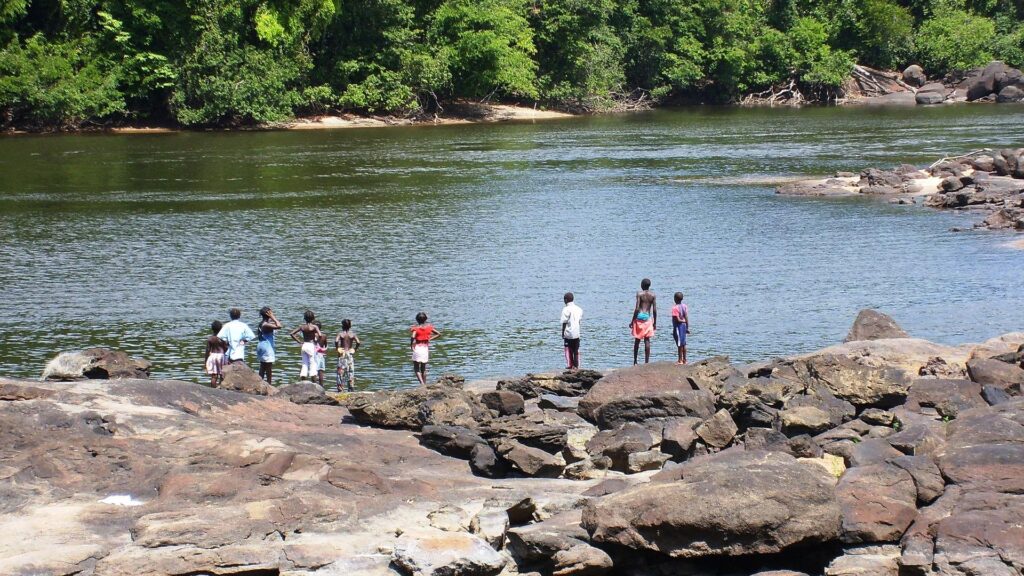
Coastal Areas in Suriname
Beaches and dunes
Suriname’s coastline is dotted with picturesque beaches and towering sand dunes. These coastal areas provide important nesting sites for marine turtles, including the critically endangered leatherback turtle. The beaches also serve as breeding grounds for seabirds and support a unique ecosystem of sand-dwelling plants and animals.
Coral reefs
Suriname’s coastal waters are home to vibrant and diverse coral reefs. These underwater ecosystems are teeming with a dazzling array of fish, crustaceans, and other marine life. The coral reefs not only provide critical habitat for numerous species but also play a vital role in protecting the coastline from erosion and storm damage.
Marine life
Suriname’s coastal waters are a haven for marine life, ranging from dolphins and manatees to various species of sharks and rays. The nutrient-rich offshore waters attract migratory fish species, making them a prime fishing location for both commercial and recreational purposes. However, ensuring sustainable fishing practices is essential to protect the delicate balance of Suriname’s marine ecosystems.
Threats to Suriname’s Landscape
Despite its natural beauty and ecological importance, Suriname’s landscape faces numerous threats that jeopardize its fragile ecosystems.
Deforestation
Deforestation, primarily driven by illegal logging and the expansion of agriculture, poses a significant threat to Suriname’s rainforests. Unregulated logging practices and the clearing of land for agriculture not only contribute to the loss of precious biodiversity but also disrupt the delicate balance of the ecosystems and exacerbate climate change.
Illegal mining
Illegal mining activities, particularly in Suriname’s interior regions, have devastating consequences for the environment. Illegal gold mining, in particular, leads to deforestation, the pollution of rivers with toxic mercury, and the destruction of critical habitats. These unsustainable practices not only degrade the landscape but also have severe impacts on the health and well-being of local communities.
Climate change
Suriname, like many other countries, is not immune to the impacts of climate change. Rising temperatures, changing rainfall patterns, and increased frequency of extreme weather events pose significant challenges to Suriname’s ecosystems. Climate change also exacerbates existing threats, such as deforestation and coastal erosion, putting additional pressure on the country’s fragile landscape.
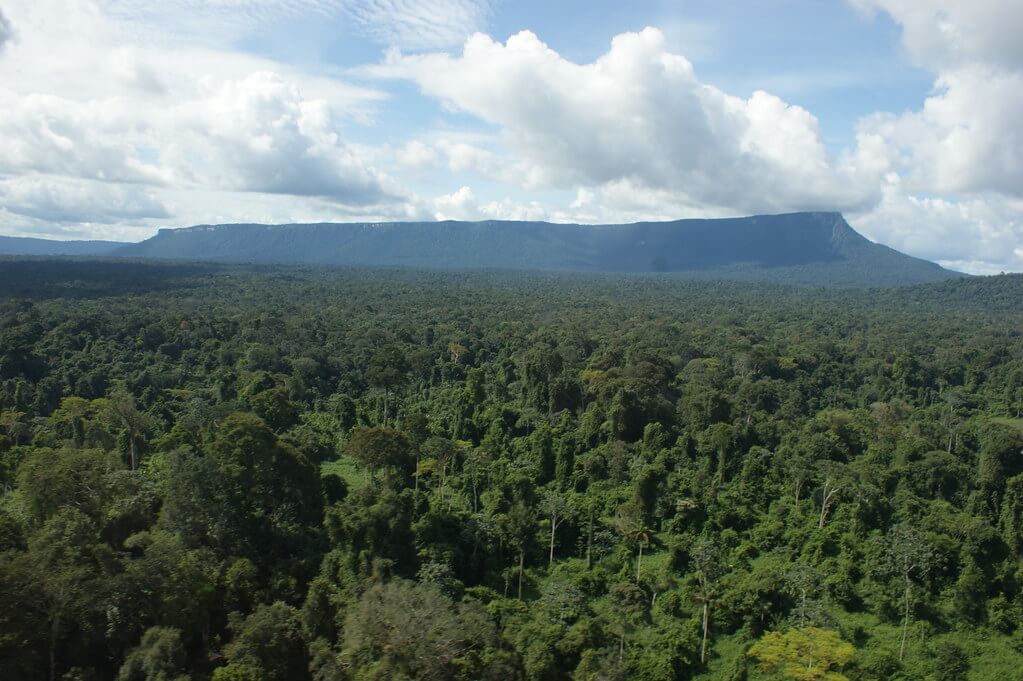
Conservation Efforts in Suriname
Suriname has taken proactive measures to conserve and protect its unique landscapes through a combination of protected areas, conservation organizations, and sustainable practices.
Protected areas
Suriname has established a network of protected areas, including nature reserves, national parks, and wildlife sanctuaries, to safeguard its biodiversity. These protected areas, such as the Brownsberg Nature Park and the Central Suriname Nature Reserve, are carefully managed to ensure the preservation of their unique ecosystems and provide opportunities for scientific research and eco-tourism.
Conservation organizations
International conservation organizations, such as Conservation International and WWF, work alongside local communities and the Surinamese government to implement sustainable conservation practices. These organizations provide technical expertise, funding, and support for initiatives focused on protecting Suriname’s wildlife, forests, wetlands, and coastal areas.
Sustainable practices
Suriname is implementing sustainable practices to balance environmental preservation with economic development. The country promotes sustainable logging practices, encourages responsible mining practices, and supports community-based conservation initiatives. By incorporating the principles of sustainability into various sectors, Suriname aims to ensure the long-term well-being of its landscapes and natural resources.
Benefits of Protecting Suriname’s Landscape
The conservation of Suriname’s landscape offers numerous benefits, both locally and globally, that extend beyond the preservation of biodiversity.
Preservation of biodiversity
Suriname’s landscape is a hotbed of biodiversity, housing countless plant and animal species found nowhere else on Earth. By protecting these ecosystems, we safeguard the genetic diversity and ecological balance necessary for the survival of these species. Preserving Suriname’s landscapes also contributes to the global effort to combat biodiversity loss and protect the planet’s natural heritage.
Ecosystem services
Suriname’s landscapes provide essential ecosystem services that are vital for the well-being of both humans and nature. The rainforests sequester carbon, helping to mitigate climate change, while wetlands filter and purify water, ensuring its availability for communities and wildlife. Coastal areas protect against storm damage and erosion, and mountains regulate water flow, supporting agriculture and providing freshwater resources.
Tourism potential
Suriname’s pristine landscapes offer significant tourism potential, attracting visitors from around the world. Eco-tourism initiatives, such as bird-watching, hiking, and wildlife spotting, provide economic opportunities for local communities while raising awareness about the importance of conservation. By preserving and promoting Suriname’s landscapes, the country can generate sustainable income and support the livelihoods of its people.
Challenges in Conservation
While there have been significant strides in conservation efforts in Suriname, numerous challenges remain in achieving a truly sustainable and inclusive approach.
Limited resources
Suriname faces resource constraints in terms of funding, capacity-building, and infrastructure for conservation efforts. Limited financial resources and technical expertise hinder the implementation of comprehensive and effective conservation strategies. Investing in the development of these resources is crucial for the long-term success of conservation initiatives.
Sustainable development
Balancing environmental conservation with economic development is a constant challenge in Suriname. The country relies heavily on natural resources, such as mining and logging, for revenue generation. Ensuring responsible and sustainable practices without compromising the integrity of the landscapes requires careful planning, regulation, and commitment from both the government and the private sector.
Community involvement
Engaging and empowering local communities in conservation efforts is essential for the success and sustainability of initiatives. Ensuring that local communities have a stake in the management and decision-making processes promotes a sense of ownership, fosters sustainable practices, and supports the preservation of traditional knowledge and cultural heritage.
Conclusion
The landscapes of Suriname are a testament to the country’s natural beauty and ecological importance. From its lush rainforests to its vibrant wetlands, from its majestic mountains to its stunning coastal areas, Suriname offers a glimpse into the wonders of nature. Preserving and protecting Suriname’s landscape is not only crucial for the well-being of its people and wildlife but also for the global effort to combat biodiversity loss and climate change.
As individuals, we can contribute to the conservation of Suriname’s landscapes by making responsible choices, supporting sustainable tourism initiatives, and raising awareness about the importance of protecting our natural heritage. Together, we can ensure that Suriname’s landscapes continue to inspire future generations and serve as a lasting testament to the wonders of our planet.
Call to action
Join the efforts to protect Suriname’s landscapes by supporting local conservation organizations, visiting eco-friendly tourism destinations, and advocating for sustainable practices. Together, we can make a difference and ensure a brighter future for Suriname’s ecological treasures.
